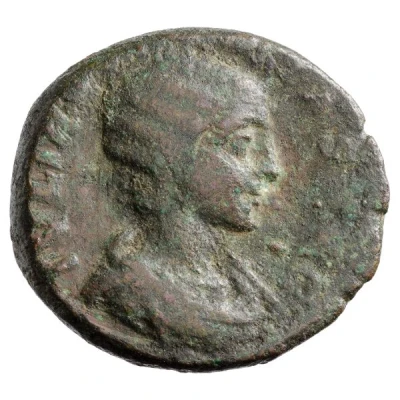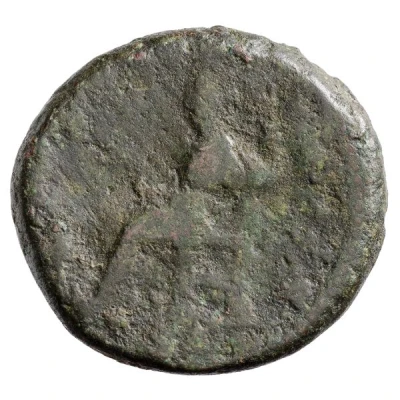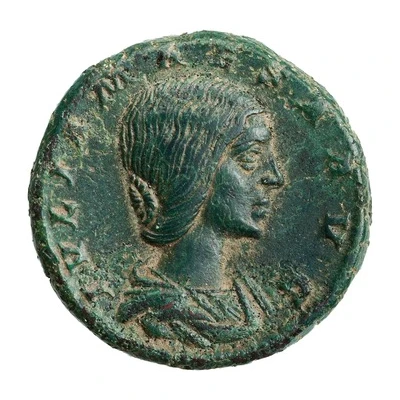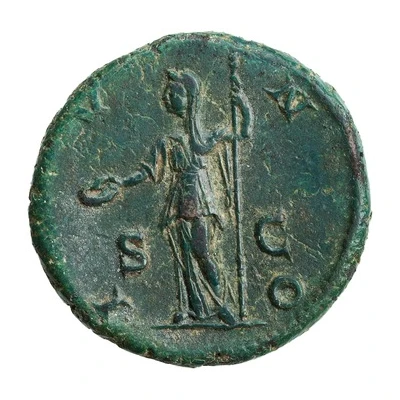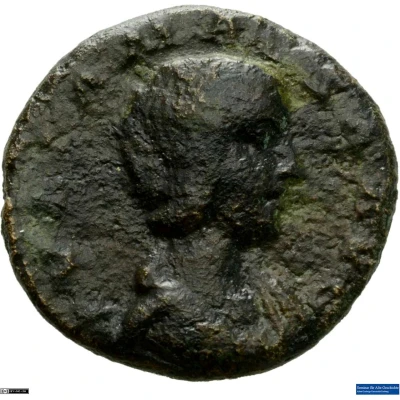
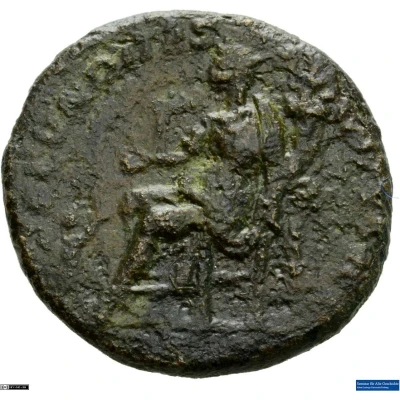

© Münzsammlung des Seminars für Alte Geschichte, Albert-Ludwigs-Universität Freiburg (CC BY-NC-SA 3.0 DE)
As - Julia Maesa FECVNDITAS AVGVSTAE S C; Fecunditas
| Bronze | 8.5 g | 24 mm |
| Issuer | Rome › Roman Empire (27 BC - 395 AD) |
|---|---|
| Emperor | Elagabalus (Sextus Varius Avitus Basianus) (218-222) |
| Type | Standard circulation coin |
| Years | 218-222 |
| Value | As (1⁄32) |
| Currency | Antoninianus, Reform of Caracalla (AD 215 – 301) |
| Composition | Bronze |
| Weight | 8.5 g |
| Diameter | 24 mm |
| Shape | Round (irregular) |
| Technique | Hammered |
| Demonetized | Yes |
| Updated | 2024-10-05 |
| Numista | N#277103 |
|---|---|
| Rarity index | 100% |
Reverse
Fecunditas, draped, seated left, extenidng her right hand to a child and holding cornucopiae in left hand.
Script: Latin
Lettering: FECVNDITAS AVGVSTAE S C
Translation:
Fecunditas Augustae. Senatus Consultum.
Imperial fertility. Decree of the senate.
Comment
Mass varies: 6.28–11.55 g;Example of this type:
Münzsammlung des Seminars für Alte Geschichte, Albert-Ludwigs-Universität Freiburg
Source:
Online Coins of the Roman Empire (OCRE)
Interesting fact
One interesting fact about this coin is that it features an image of Julia Maesa, who was a powerful and influential woman in the Roman Empire during the 3rd century AD. She was the mother of the emperors Elagabalus and Alexander Severus, and played a significant role in their rise to power. The coin's design, which includes an image of Julia Maesa with the title "Fecunditas Augustae" (Fertility of the Augusta), highlights her importance and influence in Roman society at the time.
